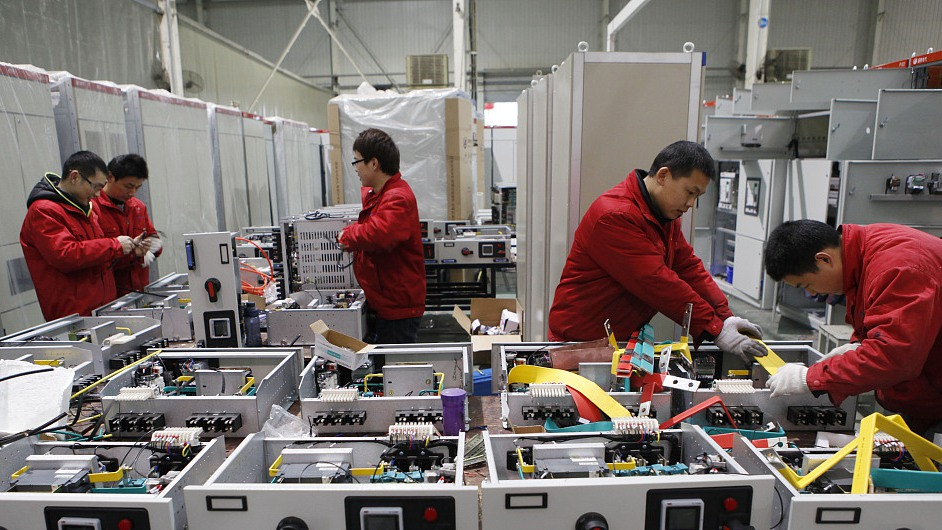
Opinion
08:48, 07-Mar-2019
China needs to break financing bottleneck for small, micro businesses
He Weiwen

Editor's note: He Weiwen is a senior fellow at the Center for China and Globalization. The article reflects the author's views, and not necessarily those of CGTN.
Premier Li Keqiang announced a series of policies and measures favoring Chinese private economy in his Government Work Report to this year's National People's Congress (NPC), which opened on March 5.
The Chinese premier stressed that we should make great efforts to improve the business environment for the private economy. The following highlights, among others, are worthy of special attention.
First, the government should keep competitive neutrality, providing equal treatment to all businesses, SOEs, private or foreign, with regards of production factors acquisition, market access, operation, government procurement, and open bidding. There will be no special privileges for SOEs.
Second, more financial support to private businesses especially small and micro-enterprises. The industrial VAT will be cut from 16 to 13 percent, and the tax exemption base for micro businesses will be raised from 30,000 to 100,000 yuan per month.
Thirdly, effective financial assistance that requires the leading state-owned commercial banks explicitly to allocate 30 percent of their total bank loans to private, small and micro businesses. And the added liquidity supplies released from a targeted cut in required reserve rate (RRR) should be used for small and micro businesses.
Fourth, sweeping simplification will happen in government approval and administration procedures, which will cut down tremendous burdens and costs on the private, especially small and micro businesses.
All the above changes will result in a friendlier and more liberal competition environment, lower cost and more financial resources. The support and facilitation for private, especially small and micro businesses are crucial for sustainable economic development in China.
China's GDP growth rate in 2019 is set at 6.0-6.5 percent at the premier's government work report. Currently, 60 percent of Chinese GDP is contributed by the private sector. The economic development is transforming to high quality, innovation-driven pattern.
Over 70 percent of innovation and 80 percent of the new patents happens in the private sector. China needs to add 11 million jobs for 2019 and again, 80 percent of the total is expected in the private sector.
China is moving towards a consumption-driven economy. The private sector provides 80 percent of consumer goods production, 75 percent of daily consumer services and 75 percent of all the housing construction.
Despite all the importance, the private sector, especially its mainstay – small and micro businesses, is often entangled in numerous tax and fee burdens, and especially the difficult access to and the high cost of bank loans.

China's 2019 NPC opens in Beijing, March 5, 2019. /VCG Photo
China's 2019 NPC opens in Beijing, March 5, 2019. /VCG Photo
In general, access to bank loans is a big problem for small and micro businesses, not large private companies. As the former accounts for the overwhelming majority in the total number of enterprises, this issue remains unsolved. A breakthrough in the solution and actual progress is badly needed in 2019.
The reasons for the large state-owned bank's reluctance in lending to private small and micro businesses are very practical.
First, it is because of responsibility. If the bank loan goes to an SOE, the government is behind. Hence, the bank could resort to the government once the borrower fails to pay back, thus has a smaller responsibility. If the bank loan goes to a private company, there will be a little solution once the loan is non-performing.
Second, bank loans to small enterprises are usually small. But the bank must go through similar procedures as the large volume loan to large SOEs, thus increasing the bank cost. Thirdly, the banking laws stipulate strict borrower creditability or mortgages, which are often difficult to be met by many small and micro businesses.
Therefore, targeted, practical measures are needed for the solution accordingly.
Firstly, it is the same disclaimer position. Premier Li stated clearly in the government work report, 30 percent of the state-owned commercial banks should go to private borrowers. It means a strong government endorsement. Once a bank loan failure looms with a private company, the government will also take measures, or the state-owned commercial bank will be less responsible.
Secondly, large state-owned commercial banks should set up special departments dealing with small loans. Thirdly, private companies, including small and micro ones, should equally abide by the credit and mortgages clauses of the banking law. They should build up their credit record and join in the credit union for small and micro businesses. Apart from all the above-mentioned measures, the relevant government department could set up a special agency for SME loan guarantees.
The U.S. Small Business Administration (SBA) provides guarantees when a small business borrows at a commercial bank. The commercial bank extends a loan to the small business just at the regular interest rate, because it doesn't worry about the repayment as the SBA will pay once there is a failure by the borrower. The Small business borrower just pays 0.5-percentage-point surcharge to SBA on the base of the bank loan and doesn't need to find money at a much higher rate. We could consider similar or even better tools in China.
A breakthrough in the financing bottleneck, the private economy, especially the small and micro businesses, will obtain a fundamental resource and strong impetus. It will not only play an even greater role in meeting 2019 economic goals, but also provide sustainable support for China's economic growth in the years ahead.
(If you want to contribute and have specific expertise, please contact us at opinions@cgtn.com.)

SITEMAP
Copyright © 2018 CGTN. Beijing ICP prepared NO.16065310-3
Copyright © 2018 CGTN. Beijing ICP prepared NO.16065310-3